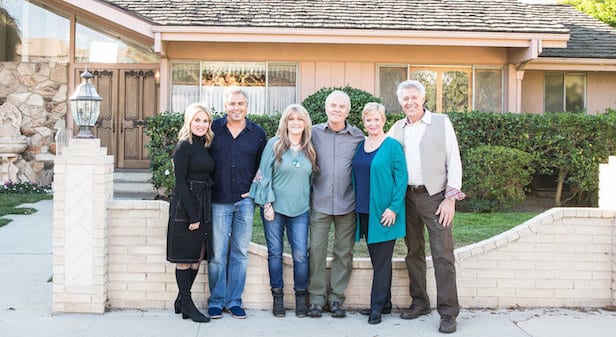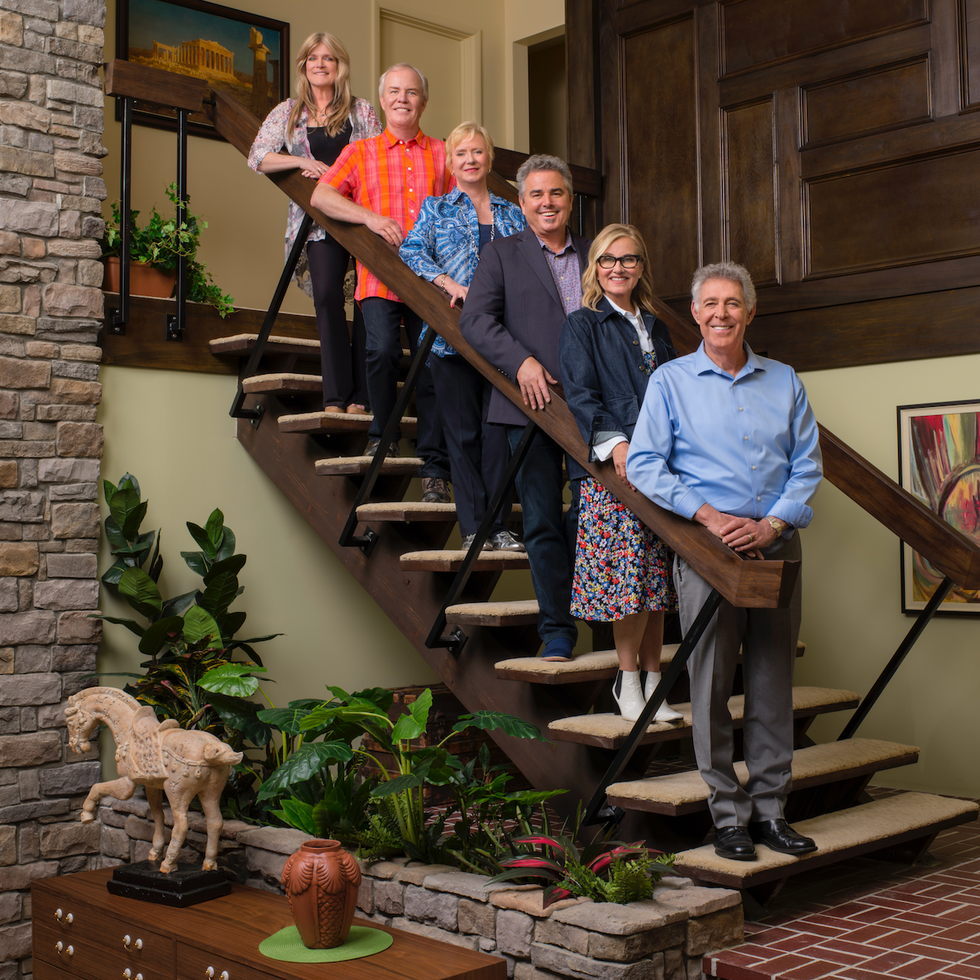
I’ve been wanting to write about A Very Brady Renovation (a 7-episode show available on HGTV and Hulu) for a while now, but could not come up with a way into it until just recently when I learned from our friend “Thomas Anderson” (his Facebook name) about a fake Green Day album made by fans. What do The Brady Bunch and Green Day have in common, you may ask? And what does any of it have to do with metamodernism?
Let’s start with the Green Day part. A band called Panicland, based in Winnipeg, recorded a set of fake Greenday songs, and was able to get a large number of Green Day fans to believe it was real. As they explain in the video above, the members of Panicland were originally inspired by a made-up Green Day album track list posted by another fan on an obscure message board. The guys in Panicland, friends and self-described Green Day fanatics since childhood, thought it would be fun to compose and record these as an actual song set, in the style of Green Day.
As the project became more elaborate, they began thinking of it as a “fan-fiction” Green Day album, and wanted it to be heard outside of their own studio. The video details some of the tricks they used to sound more like Green Day, including blending in some sampled shouts from real Green Day tracks, matching the EQ and other effects used on Green Day’s albums, and bringing in a female chorus, both to add to its improbable levels of epicness and to obscure the singer’s voice in certain crucial places. With the inclusion of the female chorus came the made-up premise that a member of that chorus may have slyly documented the session and then “leaked” photos from it.
Panicland ran with the premise. They created a few different fake accounts and used them to separately post several “breadcrumbs”: 1) audio, 2) photos of a stack of fake vinyl album covers, and 3) a shot of a mixing board with a mock-up of the cover art lying on a corner. In the video, they show how fans ate up the bits of “fake news” they were fed. Fan momentum took it further as they speculated and theorized about the authenticity of the leaked intel, and finally overwhelmingly decided it was all real because “nobody would possibly have gone to such lengths to make a prank.”
After about a month of covertly being fake rock stars, Panicland sent their explainer video to Green Day, and also informed the fans of the prank.
I feel like this is an example of a metamodern prank. Yes, there was deception on a pretty big scale, but:
• Nobody was made to look bad. It was not at anybody’s expense.
• The perpetrators of the prank were not mocking Green Day. The project was a tribute to their heroes.
• The point was not some sort of postmodern commentary on the superficiality of the music business, or of the gullibility of fans, or of the misleading nature of today’s digital culture.
It wasn’t any of those things. It was the shared indulgence of a fan fantasy – the creation of a faux object that brought delight to people, including Green Day themselves, who expressed admiration for Panicland’s stunt.

Now, back to A Very Brady Renovation. In case you don’t know: The Brady Bunch was a very popular television show watched by just about everyone who grew up in the United States in the 70s (and 80s?), either while it was airing for the first time or as syndicated reruns later. The show portrayed one of TV’s original blended families – Mike Brady with his three boys from another marriage and Carol with her three girls, shepherding America through the mini-dramas of their suburban upbringing.
An exterior shot of the Brady house on its middle-American suburban street was shown in every episode. I was probably not the only kid watching who did not realize that the show’s memorable interiors – the location of so many of my generation’s collective memories – were just a set on a sound stage, having absolutely no connection to the equally memorable exterior, which was a house located many miles away from where the cast worked.
Even actor Susan Olsen (Cindy Brady) had never been to the house’s actual location until 2011. On A Very Brady Renovation, we get first-hand confirmation that the inside of the real house used for the exterior shots of the Brady’s house didn’t look at all like the interiors that the audience and cast members had baked into our memories.
In 2018, the house was put up for sale by its owner, who’d lived there since 1973. HGTV (AKA Better Home and Gardens TV), which produces several home renovation shows, bought it for $3.5 million with the intention of creating a reality show involving the renovation of the house into one that matched the fabricated interiors (and backyard scenes) from the Brady Bunch series. Amazingly – and a big thrill for fans – all six of the actors who played the Brady kids participated, not just making staged appearances, but playing an active role in the actual renovation. (The adult characters– Robert Reed, who played Mike Brady, Florence Henderson, who played Carol Brady, and Ann Davis , who played housekeeper Alice–have all passed away).
So, Maureen McCormick (Marcia), Barry Williams (Greg), Eve Plumb (Jan), Christopher Knight (Peter), Susan Olsen (Cindy) and Mike Lookinland (Bobby) all contributed labor and expertise about the original set to the project.
It surprised me how delightful it was to see the various rooms and fixtures and carpets and decorations and stairways… all get made “real.” For the new house, one of the goals was not just to duplicate the Brady home’s aesthetic but to create a real, functional, livable home with all of the details of the TV house, as we’d all experienced it through the camera. In that sense, scenes from our collective imaginary were being brought into the concrete world. It was quite moving to witness the palpable, wondrous joy the adult Brady actors experienced participating directly in this process. Meanwhile, many of the iconic furniture pieces necessary to complete the project were supplied by fans from around the country, many of whom expressed – almost tearfully – how giddy they were to be involved.
Both of these cultural instances – Panicland’s fake Green Day album and A Very Brady Renovation – involve artifice employed for the agenda of rendering delight, in a sort of metamodern repurposing of postmodern trickery. In the case of Panicland, what potentially could have played out as a debunking of the mystique belonging to a much more established band turns out to be a tribute. While they employed media tricks, because they could – and needed to – in order to create a delightful experience for their fellow Green Day fans, importantly, they maintained the illusion only long enough to generate the effect they desired, and then let everybody in on the secret. With the Brady house renovation, the original illusion – that of the 1970s set – was revealed, and then that which had previously only existed as ephemeral surfaces was re-manifested as something durable and functional, honoring the collective interiority of millions of now-grown-up 1970s children.
A final note: The way these two cultural artifacts showcase metamodern cultural sensibilities stands in contrast to one way in which metamodernism is sometimes misconstrued. Namely, the term “metamodernism” is sometimes used to justify manipulative behavior such as gaslighting, fudging the truth, or hiding behind false identities or false pretenses – “Hey, I didn’t do anything wrong! I was just being metamodern!” In such cases, the perpetrator employs tricks in order to gain some sort of advantage over the audience of their deception. Again, the Panicland/Greenday album and the Brady house renovation were performed with and for their audiences, playing collaboratively with questions about the real and the fantastic, ultimately in order to create meaning where meaning had been in doubt.
*****
Enjoyed this post? Check out our earlier reflections on the metamodern shift toward embracing ‘the awe in everyone‘ : “That’s AWEsome!!”



